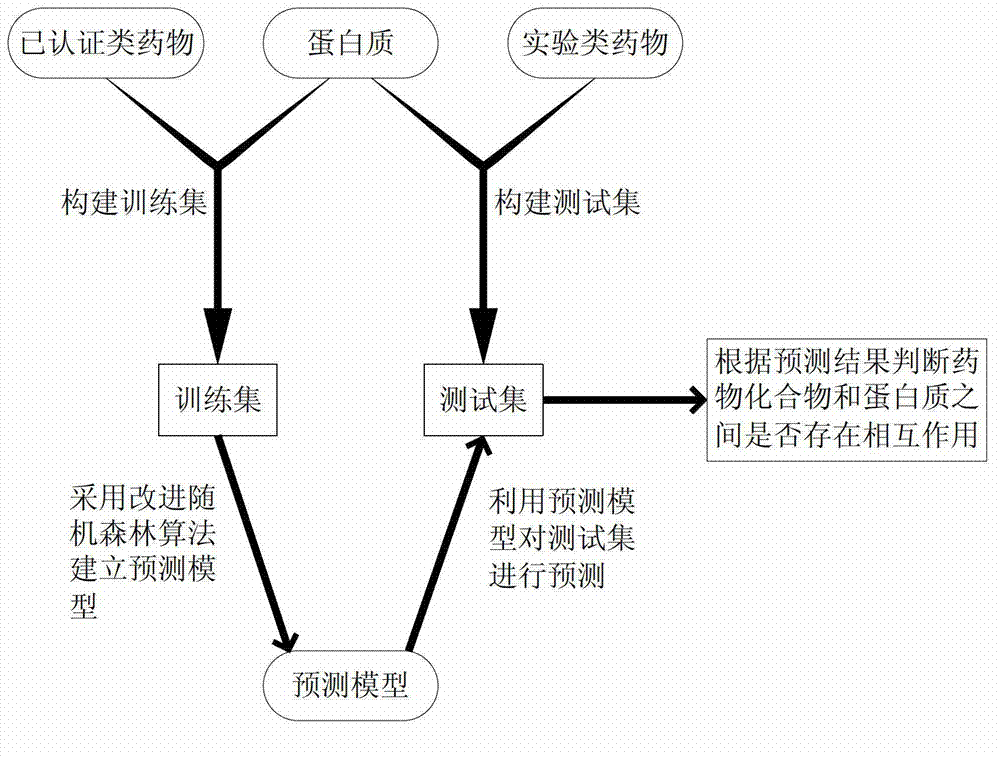Method of predicting interaction between chemical compounds and proteins based on random forest
A random forest algorithm and random forest technology, applied in the field of computer-aided drug design, can solve the problem of low prediction accuracy
- Summary
- Abstract
- Description
- Claims
- Application Information
AI Technical Summary
Problems solved by technology
Method used
Image
Examples
Embodiment Construction
[0028] In order to make the purpose, implementation and advantages of the present invention more clearly understood, here in conjunction with specific implementation example, be described in further detail, as figure 1 Shown:
[0029] (A) Collect information on target proteins known to interact with drug compounds to build a target library.
[0030] From the DrugBank3.0 database (C.Knox et al., Nucleic Acids Research , 201139 (suppl 1), p.D1035-D1041) to obtain 4177 known target proteins and their sequences that can interact with drugs, and according to the target protein sequence information, select the target protein through PseAAC (pseudo Amino acid composition, Pseudo Amino Acid Composition, see literature HB Shen&KC Chou, Analytical Biochemistry , 2008, 373(2), p.386-388) tool to calculate the feature descriptors of all target proteins, and the number of feature descriptors is 30.
[0031] (B) Collect the drug compounds used to build the training set (that is, the d...
PUM
 Login to View More
Login to View More Abstract
Description
Claims
Application Information
 Login to View More
Login to View More - R&D
- Intellectual Property
- Life Sciences
- Materials
- Tech Scout
- Unparalleled Data Quality
- Higher Quality Content
- 60% Fewer Hallucinations
Browse by: Latest US Patents, China's latest patents, Technical Efficacy Thesaurus, Application Domain, Technology Topic, Popular Technical Reports.
© 2025 PatSnap. All rights reserved.Legal|Privacy policy|Modern Slavery Act Transparency Statement|Sitemap|About US| Contact US: help@patsnap.com

